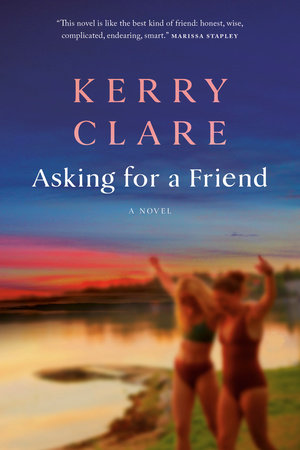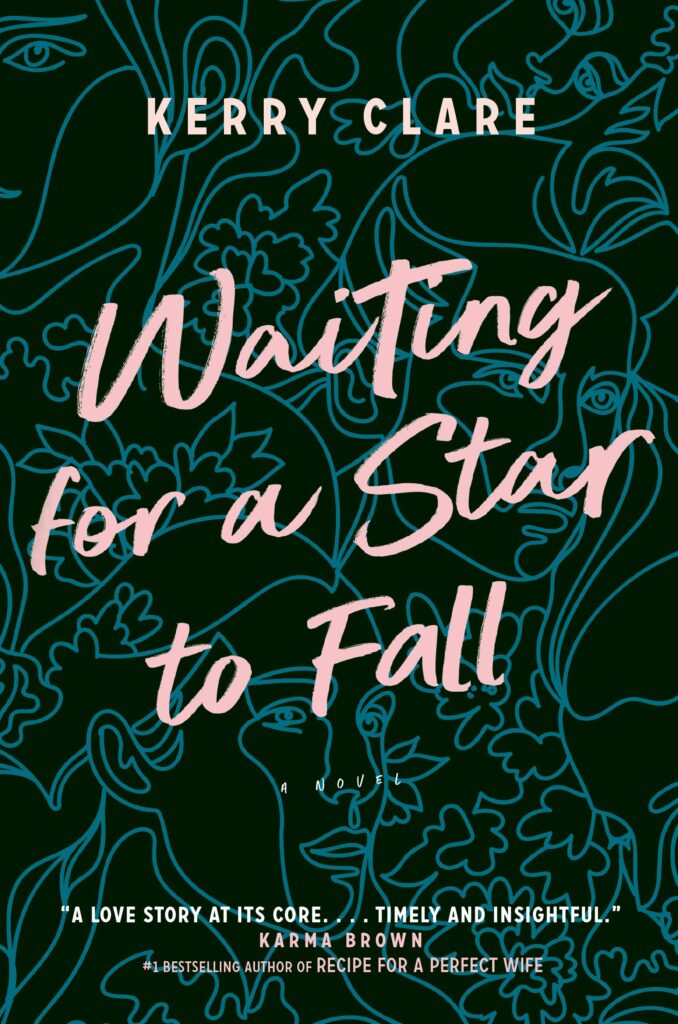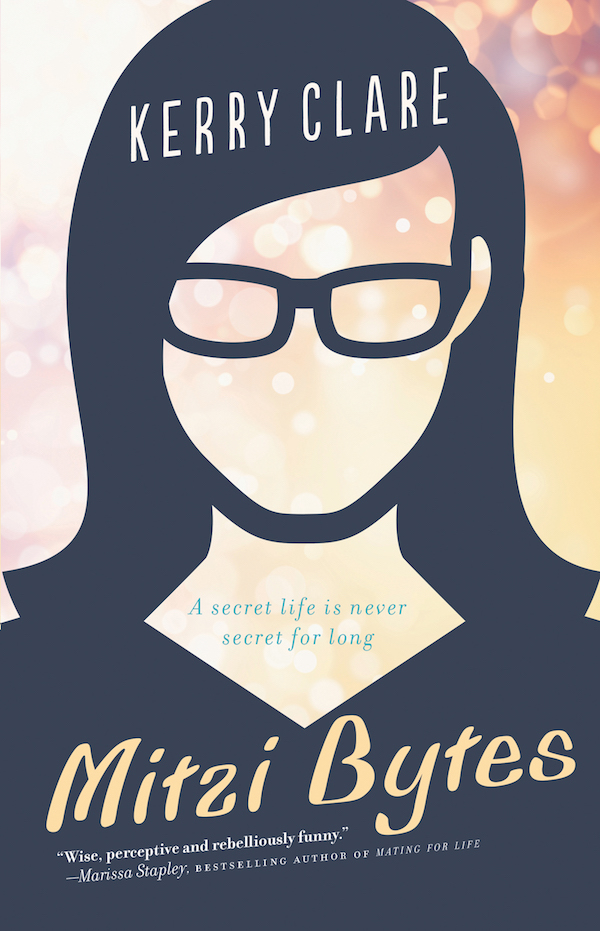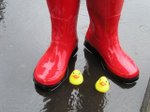August 10, 2008
As all good fiction should…
Now, I am not one to approach my fiction from a purely aesthetic point of view. I wouldn’t even know how to, but even I was struck by the introduction to Patricia Robertson’s review of The Prairie Bridesmaid in this week’s G&M: “As all good fiction should, Daria Salaman’s debut novel… triggered some happy memories for this reader.” How weird.
First, that the grammar suggests all good fiction should trigger some good memories for Patricia Robertson specifically, which seems a tall order for writers (some of whom mightn’t even have met her!!). More seriously, I love sentimentality as much as the next soppy git, but when reviewing fiction in a national newspaper, shouldn’t one be expected to set their literary standards a bit higher? Which is not to say I have any problem with sentimentality, with nostalgia (because many of my favourite books take on a nostalgic bent, and I also realize that most history happened just minutes ago) but surely neither of these alone are substance enough to seize upon. And that Robertson goes on to write a decent review suggests to me that she knows this, so I’m confused why she chooses to open her piece as she does. Unless it is a subtle reference to “It is a truth universally acknowledged…”, not wholly out of place here, but then surely a more clever sweeping generalization might have been found?
Second– the idea that “all good fiction” could do one single thing, like a chorus. Few things get me more rankled, and I don’t care what that one single thing might be. I just believe believe we have to keep our definitions of fiction, its possibilities, so broad if there is to be any hope of “goodness” at all. That if fiction, good or otherwise, just like “the novel” and the “the story”, ever came to conform to these kind of prescriptions, to any prescriptions, how much we all would lose for it.
If every single book was the book that we wanted, we’d stop knowing how to fall in love.
July 25, 2008
Looking forward
It may have been raining plenty of late, but it is still summer. We’re off on a cottage mini-break this weekend, for which we’re very lucky and excited, and life is never ever better than it is in July. However the following is a list of things for which I’m looking forward to autumn (and they must be good, to make me look past July). Surprise, surprise, they’re mainly bookish:
- Once by Rebecca Rosenblum (Biblioasis, September 15)
- Goldengrove by Francine Prose (Harper Collins Canada, September 3)
- The Flying Troutmans by Miriam Toews (Knopf Canada, September 2)
- Alfred and Emily by Doris Lessing (Harper Collins Canada)
- Lucy Maud Montgomery: The Gift of Wings by M.H. Rubio (Doubleday Canada October)
- When Will There Be Good News? by Kate Atkinson (Bond Street Books, September 9)
- What It Feels Like For A Girl by Jennica Harper (Anvil Press, September 15)
- Promised Land by Dar Williams (September)
July 24, 2008
Already Elsewhere
Taking offense to a recent article which termed fiction as distraction, and non-fiction as enlightenment, my friend K at The Pop Triad has some wonderful things to say:
“Fiction is a distraction, but all books are. Reading steals you from the sensory world around you and immerses you in the interior world of the pages in front of you. The temperature and sounds of the place where you sit to read, your seat itself, are irrelevant. You could be anywhere because you are already elsewhere.”
And she wonders if “it’s time to reconsider our collective mindset about the kinds of books that are distractingly enlightening and the kinds that are simply distracting.”
July 19, 2008
A return to order
 Returning my books to their freshly painted shelves last evening was as satisfying as popping bubble wrap, or tweezing out an ingrown hair. I’d had to resist the urge to get it all done earlier, before the paint was surely dry, exercising my sorely underused sensibility muscle. Telling myself over and over, it is hot and humid, shelves could be sticky, books could get stuck= disaster. But it’s finished now, books are home. The room is fresh and bright, and the built-in shelves are no longer dingy grey. Though we do have a unique problem here of too many shelves, and the collection looks piddly. But still lovely, standing at attention and alphabetized for your pleasure…
Returning my books to their freshly painted shelves last evening was as satisfying as popping bubble wrap, or tweezing out an ingrown hair. I’d had to resist the urge to get it all done earlier, before the paint was surely dry, exercising my sorely underused sensibility muscle. Telling myself over and over, it is hot and humid, shelves could be sticky, books could get stuck= disaster. But it’s finished now, books are home. The room is fresh and bright, and the built-in shelves are no longer dingy grey. Though we do have a unique problem here of too many shelves, and the collection looks piddly. But still lovely, standing at attention and alphabetized for your pleasure…
July 17, 2008
Everyday I violate some principles
 So at the end of June, I vowed not to buy another book until September. (I haven’t announced this officially, hoping to avoid driving book stock further into the toilet). Because I have 27 books on my books unread shelf, I’m rereading all summer, and also because I feared that my book buying had become compulsive, and I wanted to prove that it wasn’t. I couldn’t. I already bought a book on Monday, and then I did it again today. But then how could I not have, for this is not just any book. Sigh, but when is it ever?
So at the end of June, I vowed not to buy another book until September. (I haven’t announced this officially, hoping to avoid driving book stock further into the toilet). Because I have 27 books on my books unread shelf, I’m rereading all summer, and also because I feared that my book buying had become compulsive, and I wanted to prove that it wasn’t. I couldn’t. I already bought a book on Monday, and then I did it again today. But then how could I not have, for this is not just any book. Sigh, but when is it ever?
I’d never heard of Toronto: A Literary Guide until today, when it appeared in the window of a used bookshop calling my name. Published in 1999 by Greg Gatenby (of the International Festival of Authors), this sweet tome is a perfect catalogue of all the places writers have lived or visited, written or read, or congregated together in Toronto. Broken down by neighbourhood, written in a non-cataloguey convivial tone, with fabulous details, context, historical fact, dealing with writers working in a variety of genres, dating back to the nineteenth century. Page upon page of lives.
Let’s take my neighbourhood, “South Annex”, or a one-block radius of my house, to break it down more. Major Street has been home to writers M.T. Kelly, Janet Hamilton, Howard Engel, Albert E.S. Smythe, Aviva Layton, Leon and Constance Rooke, Michael Ondaatje and Linda Spalding, Charles Tidler and Martyn Burke. Gwendolyn MacEwen lived around the corner on Robert. The marvelous house at 84 Sussex was home of the new press in the early ’70s. Greg Hollingshead and John Bemrose lived there as well. Brunswick Ave. has been home to Janice Kulyk Keefer, Olive Senior, Maggie Helwig, Adele Wiseman, David French, Erika Ritter, and Karen Mulhallen. Do note these details (whose prose is far more charming than I let on here) take up three pages of 622. Which means that my neighbourhood is fabulous, and this book is tremendously rich.
Indeed I am one of those curious (and ubiquitous) creatures partial to the literary pilgrimage. How fun to now have so many now right outside the door, and a whole new book full of fantastic things to know, new connections. Awakening me to the secret history of maps I know by heart.
July 16, 2008
Scream in High Park
 Our trip last night to The Scream Literary Festival’s “Scream in High Park” Mainstage was quite well-documented. Off we went, waving good-bye, with a picnic full of carbs in tow. Took the subway to High Park Station and then walked deep deep into the woods, and claimed some prime seating at the venue.
Our trip last night to The Scream Literary Festival’s “Scream in High Park” Mainstage was quite well-documented. Off we went, waving good-bye, with a picnic full of carbs in tow. Took the subway to High Park Station and then walked deep deep into the woods, and claimed some prime seating at the venue.
 The menu consisted of pasta salad, Rosenblum bread, avocado scones, cheese, and sweet snacks ala Enright. But if you can believe it, such a delicious spread wasn’t even the main event.
The menu consisted of pasta salad, Rosenblum bread, avocado scones, cheese, and sweet snacks ala Enright. But if you can believe it, such a delicious spread wasn’t even the main event.
 First up was the magnificent Mariko Tamaki, writer of Skim, which I’ve been lusting after for a while. (See Tamaki to the right). She opened her set with a poem comprising Facebook statuses of yore, read and excerpt from Skim, and then an essay about ephemerality that was well and truly lovely.
First up was the magnificent Mariko Tamaki, writer of Skim, which I’ve been lusting after for a while. (See Tamaki to the right). She opened her set with a poem comprising Facebook statuses of yore, read and excerpt from Skim, and then an essay about ephemerality that was well and truly lovely.
Another delight was seeing Claudia Dey read again from Stunt. As a reader she is as compelling as Tamaki, though in a different way, and I would have run right out and bought her book if I hadn’t done so already.
I also loved Sonnet L’Abbé, Wayde Compton with Jason de Coutu, Ray Robertson and Motion. I would have loved even more too, except I had to work in the morning and so we left before the final set. And it was too dark by then to take a photo of us waving goodbye.
Such a magical evening, assembled there with friends and strangers. Inside a forest in the midst of this big city, a summer night that grew cool as the sun went down. Fireflies stealing the show, those luminous acrobats– I could hardly keep my eyes off them.
And in terms of the human performers, I’m not sure who stole the show most, though the lineups at the booksale provided a very good indication…
July 1, 2008
Celebrating the Short Story
I’m writing this now, lying on the carpet in front of my bookshelves. I’ve been thinking about this post for a long time, what exactly I wanted to write about, and I decided it would be best written with inspiration in sight, within reach. Where I’m lying now, I’ve got my books by authors J-L before me– I’m looking at Jhumpa Lahiri’s two books of short stories. Bloodletting and Miraculous Cures. Up above are collections by Jack Hodgins, Sheila Heti. Books by authors S-Sh are to my right– J.D. Salinger, Carol Shields. The Ps above that– Grace Paley, Emily Perkins. Flannery O’Conner is tucked over in the corner beside a Norton Anthology that contains “The Dead”. I really couldn’t think of a better vantage point for such a celebration than this (except if I were standing up, Twilight of the Superheroes would be within my grasp).
I’ve been wanting to celebrate the short story since I attended a reading of Luminato’s Festival of the Short Story last month, since I read Rebecca Rosenblum’s blog post after the fact, since I found out about Joyland, a new online home for short fiction established by writer Emily Schultz. One of the first stories posted there being “Clear Skies” by Lynn Coady, who’d moderated the Luminato writing I was at, and whose comments regarding the form were properly celebratory– the risks short fiction allows writers and readers, how it expands the possibilities of what fiction can explore, how the short stories are not miniature novels or long poems, but something onto themselves. Worthy of a festival indeed.
But not always celebrated, no. I’ve written before about short fiction’s illusionary portability, and I think a lot of readers get tripped up on this. Expecting brevity to mean easy, but it usually doesn’t mean such a thing at all. If anything, short fiction can take as long to penetrate as a novel does, reading it again and again instead of just once straight through. Which is an investment that doesn’t always make sense in purely economic terms (time is money etc.)– so much time and focus on a couple of pages, you might as well read a novel.
Further it’s hard to read a short story collection. I’m not always convinced collections are the best homes for short stories anyway– they work so well in magazines, I think, and online certainly could be close to ideal. But unless the collection was always meant to be a collection, as opposed to a stack of stories stuck together with string, it can make for stilted reading. And the time thing matters– how do you fit a short story collection into a day? One story might be too short for the bus ride, another too long to get through before you turn out the light and go to sleep.
Addressing any of this is a bit ridiculous because “the short story” is about as various as “the novel” or even “art”. Jhumpa Lahiri is barely related to Sheila Heti, for example. A short story is any/everything. The only thing that is certain is that a short story is itself.
I was a very undiscerning reader when I was in high school. I read what was put before me without judgment, because it was a book and books were good. Because I was Canadian, Alice Munro came my way, and I read Margaret Atwood– I remember liking Wilderness Tips. I read short story collections the way I did novels, voraciously, uncritically. But I do remember being vaguely unsatisfied by them. That I’d approach them looking out for what novels do, and when the stories failed to do it too, I didn’t know what else to do with them.
Which is not to say that I passed them over, but I rarely sought them out. I wanted to read whole worlds and not their pieces, failing to understand the key is to unpack the pieces, pick them apart to find the worlds inside. Within every single atom, if you’re lucky, and you will be.
The first short story collection I truly loved was Various Miracles by Carol Shields. Containing the story “Scenes” which is one of my favourites, itself made up of scenes (of course): “There are people who think such scenes are ornaments suspended from lives that are otherwise busy and useful. Frances knows perfectly well that they are what a life is made of, one fitting against the next like English paving-stones.” And the stories in this collection set up the same way– not linked, but fitted against, which is different. There is a space between. Engaging the reader to discern the connections herself, but it’s there– that voice, those themes. Here are pieces that equal even more as a whole.
One of the challenges of the short story– the effort required to read one’s way inside it– is conversely one of the best things it offers. The opportunity to read it again and again, engaging, becoming intimate, discovering its detail, the secrets inside. To get this close to a novel takes time, and perhaps was never even its purpose. Whereas the purpose of a story is to be steeped in, perpetually uncorked. To lie down inside so to look at the sky.
Discovering Grace Paley was a revelation to me, making clear more than any other writer ever had, that a short story was a short story was a short story, and that was that. Paley’s stories wore their storyness on their story sleeves, and I’ve never read anything else quite like them. They’re tough too– once through is not sufficient, you’ve got to go it again and again. She puts up blocks, strange twists, you’re not there to get comfortable. On your toes, get there and stay there. Read about a lady in a tree.
I read My Mistress’s Sparrow is Dead this winter, edited by Jeffrey Eugenides, and decided thematic anthologies are where the story has never been more alive. To be steeped inside one story after another, storyness in general, all of them of superlative quality, and various, multitudinous as you like. There were even some I hated, and I liked the freedom to be able to do so. Any/everything, from all over the world. If you asked me, What is the short story, I’d hand you this book the size of a brick.
Short stories populate my library. As the sun has started to go down, I’ve turned the light on and I can see to the tops of the shelves. Laurie Colwin, Kate Atkinson, Timothy Findley, Kate Sutherland, Virginia Woolf. I received Forms of Devotion by Diane Schoemperlen for my birthday last week. I’m looking at The Journey Prize Stories 19 now, and the literary journals that help keep the short story in business. The space where Grace Paley used to be, because I’ve taken her down now. In preparation of celebrating stories in the way I know best– through reading them.
June 26, 2008
Worthwhile
You’ll have to buy the magazine, but do check out Guy Gavriel Kay’s “Summertime When the Visigoths Go Pillaging” in the July/August issue of The Walrus. I’d quote the whole thing, it’s that lovely, but I’ll settle for, “…I suspect we all have inward links between some books and where we were when we escaped into them. Everyone knows the memory links to scents or the pop songs of teenage summers, but I suspect if we reach back and in, we’ll find many of the books of our lives to be vividly time and place specific too.” Indeed.
My friend Lauren Kirshner has started blogging, and her posts demonstrate her immense talents. (She’s got a book Where We Have to Go being published by McClelland and Stewart in the spring). Kate Sutherland’s post post on Anne of Green Gables at 100 (to the day) is fabulous, quoting from Montgomery’s journal entry the day her book came: “There in my hand lay the material realization of all the dreams and hopes and ambitions and struggles of my whole conscious existence—my first book!” Fine Lines (my favourite diversion) is going to become a book! And a profile of Jhumpa Lahiri.
I also went to the ROM this weekend. Their exhibit “Out from Under: Disability, History, and Things to Remember” is extraordinary (and on until July 13).
June 26, 2008
A Perfect Match
 We don’t talk fashion much, here at Pickle Me This, except when its bookish. But then how bookish is this, to find myself today wearing a dress that was perfectly coordinated with my reading material? I don’t think even cool people have started doing this yet. Or perhaps that they haven’t is the fact that makes them cool…
We don’t talk fashion much, here at Pickle Me This, except when its bookish. But then how bookish is this, to find myself today wearing a dress that was perfectly coordinated with my reading material? I don’t think even cool people have started doing this yet. Or perhaps that they haven’t is the fact that makes them cool…
June 18, 2008
Books at Bedtime
I love England. They’re all in a furor over something called “Books at Bedtime”. (Can you imagine getting worked up over something called that? It would be like throwing eggs at the Teddy Bear’s picnic.) Listeners are upset about a radio broadcast of Barbara Gowdy’s Helpless, because the broadcast gave some of them nightmares. ‘”Helpless is inappropriate for any time of day, least of all at bedtime,” said Helen Thompson. “The subject is tasteless and given the society in which we live totally inappropriate.”‘ Apparently the BBC has been inundated with complaints about this, most on the basis that the broadcast was “frightening”. Though perhaps they just read the book in a really spooky voice? And can we complain whenever anything is frightening now? Further, how on earth do these people know who to call? I wonder if they’ve got a number on speed-dial.





